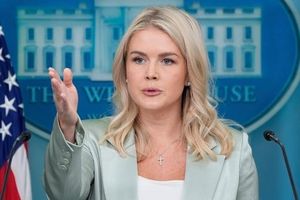The Federal Reserve's recent decision to cut interest rates has sent ripples through financial markets, creating waves of speculation about the potential impact on the U.S. economy and beyond. Following the conclusion of their Federal Open Market Committee (FOMC) meeting, the Fed slashed its benchmark overnight borrowing rate by 25 basis points, bringing it down to a target range of 4.50% to 4.75%. This marks the second consecutive interest rate cut since the Fed embarked on this path earlier this year, aiming to maintain the U.S. economic expansion and address rising inflation concerns.
Market watchers held their breath leading up to this decision, with various analysts providing their takes on what the cut means. While some viewed the 25 basis-point reduction as somewhat insignificant—a mere “non-event” for markets—others believed it carried important messages about the Fed's outlook on future economic conditions. Shrikant Chouhan, the head of equity research at Kotak Securities, remarked, "A 25 basis-point increase will be a non-event for the market, but overall commentary and outlook will be more important and eventful. If the Fed talks about keeping the rate unchanged for the next meeting, then it would have negative implications."
Indeed, much of the equity market's sentiment hinges on the Fed's guidance about the economy's future. Abhishek Jain, head of research at Arihant Capital Markets, confirmed this sentiment, pointing out the real impact on market conditions will depend on the Fed's outlook on economic trends and hints about the timing of future rate cuts. "The real impact on market sentiment will likely depend on the Fed’s outlook and any hints about the future," he said.
Fed Chair Jerome Powell took the stage during the press conference after the meeting and expressed confidence about the economy, saying he was “feeling good” about economic conditions. According to Powell, the economic data, including recent GDP growth and inflation reports, indicated stability, yet he also acknowledged the uncertainties surrounding inflationary pressures and global economic ties.
Powell stated, “Overall, we’re feeling good about economic activity,” but also warned about the need to remain cautious against inflationary risks and global tensions. He noted the significance of forthcoming data, which will be integral to guiding the Fed's future policy decisions. The chair emphasized their dual mandate: to promote maximum employment and maintain price stability.
Another consideration is the broader geopolitical environment, especially with the political shake-up stemming from the recent presidential election, where Donald Trump made his way back to the White House. This shift could have significant policy repercussions, with Trump’s proposed tax cuts and deregulation potentially shaping future economic landscapes.
Even as national sentiment shifts, there remains clarity about how the Fed intends to navigate changing economic waters. Powell assured the public, saying, “If the economy remains strong and inflation does not sustainably move toward 2%, we can dial back our policy restraint more slowly.” Open discussions about prospective rate cuts have made their way to analysts’ tables, with suggestions of more cuts on the horizon.
On the economic front, the labor market remains decent, but the data has hinted at moments of easing. Job postings at businesses experienced reductions, with approximately 7.4 million openings recorded, down from 9.3 million over the same period the prior year. Yet, even with these reductions, the job market's health remains commendable, with the unemployment rate sitting at 4.1%—historically low yet slightly up from last year.
Some analysts believe the Fed's cautious stance could lead to challenges. Economists suggest there may be inflationary pressures from Trump's policies as he pushes forward with various economic reforms. Recently, Oxford Economics shared their analysis, affirming the outlook for 2025 and indicating it wouldn't significantly change, implying more rate cuts may still be on the table next year.
While market participants await more clarity about the transformative effects of Trump’s potential policies, many are still trying to digest the initial impacts of the rate cuts. The immediate effects on consumer debt instruments such as mortgages and car loans are of pressing interest to everyday people as these rates influence spending behavior.
The recent drop and potential rise of mortgage rates create interesting dynamics for those considering home purchases. Over the past month, average 30-year mortgage rates jumped to 6.79% after initially falling to around 6.1%. Rafael Corrales, representing Redfin, noted how prospective homebuyers are feeling confused as they navigate these changes. “They were very confused,” Corrales explained after clients had been lured by the lower rates only to encounter step-ups at the financial approval stage.
This situation highlights the undercurrents of uncertainty within the housing market. The theory behind the Fed’s rate cuts is straightforward; when they lower benchmark rates, it typically paves the way for lower rates on various loans and mortgages. So when the central bank took the step to reduce borrowing costs again, many hoped it would offer some leeway to drop mortgage rates.
Time will certainly tell how these shifts play out, especially as the Fed continues to observe economic indicators closely. On the one hand, the U.S. economy appears resilient with consumer spending showing promise; on the other hand, anxiety over inflation lingers. Powell's balance of optimism paired with caution encapsulates the current mood—a kind of tightrope walk over economic data and geopolitical uncertainties.
For investors and analysts monitoring the Fed's every move, there’s little doubt this dynamic economic interplay will make for intriguing discussions throughout the coming months. The prevailing hope is to reach clarity on what the future holds as numerous variables are put on the table. Whether the economy continues its upward trend or faces new challenges lies at the forefront of today’s dialogues.



